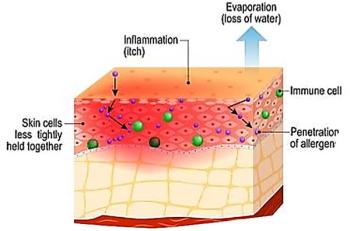
More Childhood Stress Linked to Increased Risk for Cardiometabolic Disease
Findings from new study suggest that promoting healthy coping strategies for stress during early life can reduce cardiometabolic risk, report researchers.
High levels of perceived stress experienced from adolescence to adulthood may contribute to greater
“Our findings suggest that perceived stress patterns over time have a far-reaching effect on various cardiometabolic measures including fat distribution, vascular health and obesity,” said coauthor Fangqi Guo, PhD, postdoctoral research fellow, Keck School of Medicine, University of Southern California, Los Angeles, said in an American Heart Association press release. “This could highlight the importance of stress management as early as in adolescence as a health protective behavior.”2
Cardiometabolic diseases, including
To investigate how childhood-to-adulthood perceived stress patterns predict cardiometabolic risk in adulthood, researchers analyzed data from 276 participants (55.8% women, 62% White, 47.1% Hispanic) from the Southern California Children’s Health Study (2003-2014) who underwent a follow-up assessment from 2018 to 2021.1
According to the study, parents completed a Perceived Stress Scale for their children at baseline, when the mean age of participants was 6.3 years. The participants completed the scale themselves during adolescence (mean age, 13.3 years) and young adulthood (mean age, 23.6 years).1
Participants were grouped into 4 stress patterns: consistently high, decreasing, increasing, and consistently low. Investigators assessed cardiometabolic risk in young adulthood by carotid artery intima‐media thickness, systolic blood pressure (SBP), diastolic blood pressure (DBP),
Guo and colleagues used multivariable linear and logistic regression models to analyze the associations between Perceived Stress Scale at 3 times points and adult cardiometabolic risk, and to examine the impact of stress patterns on adult cardiometabolic risk.1
FINDINGS
Results showed that during adulthood, higher Perceived Stress Scale score was associated with increased overall cardiometabolic risk (β=0.12, 95% CI 0.01–0.22), carotid artery intima‐media thickness (β=0.01, 95% CI 0.0003–0.02), SBP (β=1.27, 95% CI 0.09–2.45), and DBP (β=0.94, 95% CI 0.13–1.75).1
Participants with a consistently high adolescence-to-adulthood stress pattern had greater overall cardiometabolic risk (β=0.31, 95% CI 0.02-0.6), android-to-gynoid ratio (β=0.07, 95% CI 0.02-0.13), percent body fat (β=2.59, 95% CI 0.01-5.17), and greater odds for obesity (odds ratio [OR] 5.57, 95% CI 1.62-19.1) in adulthood, compared with those with a consistently low Perceived Stress Scale score, reported investigators.1
“Although we assumed that perceived stress patterns should have some association with cardiometabolic measures, we did not expect such consistent patterns across various risk factors,” said Guo in the press statement.2
“Health care professionals should consider using the Perceived Stress Scale to evaluate individuals’ stress levels during clinic visits. This way, those with higher stress levels can be identified and receive treatment earlier,” continued Guo.2
References:
- Guo F, Chen X, Howland S, et al.
Perceived stress from childhood to adulthood and cardiometabolic end points in young adulthood: An 18-year prospective study. J Am Heart Assoc. Published online January 17, 2024. doi:10.1161/JAHA.123.030741 - Childhood stress linked to higher risk of high blood pressure, obesity, diabetes in adults. News release. American Heart Association. Published January 17, 2024. Accessed January 17, 2024.
https://newsroom.heart.org/news/childhood-stress-linked-to-higher-risk-of-high-blood-pressure-obesity-diabetes-in-adults
Newsletter
Enhance your clinical practice with the Patient Care newsletter, offering the latest evidence-based guidelines, diagnostic insights, and treatment strategies for primary care physicians.
























































































































































































































































































